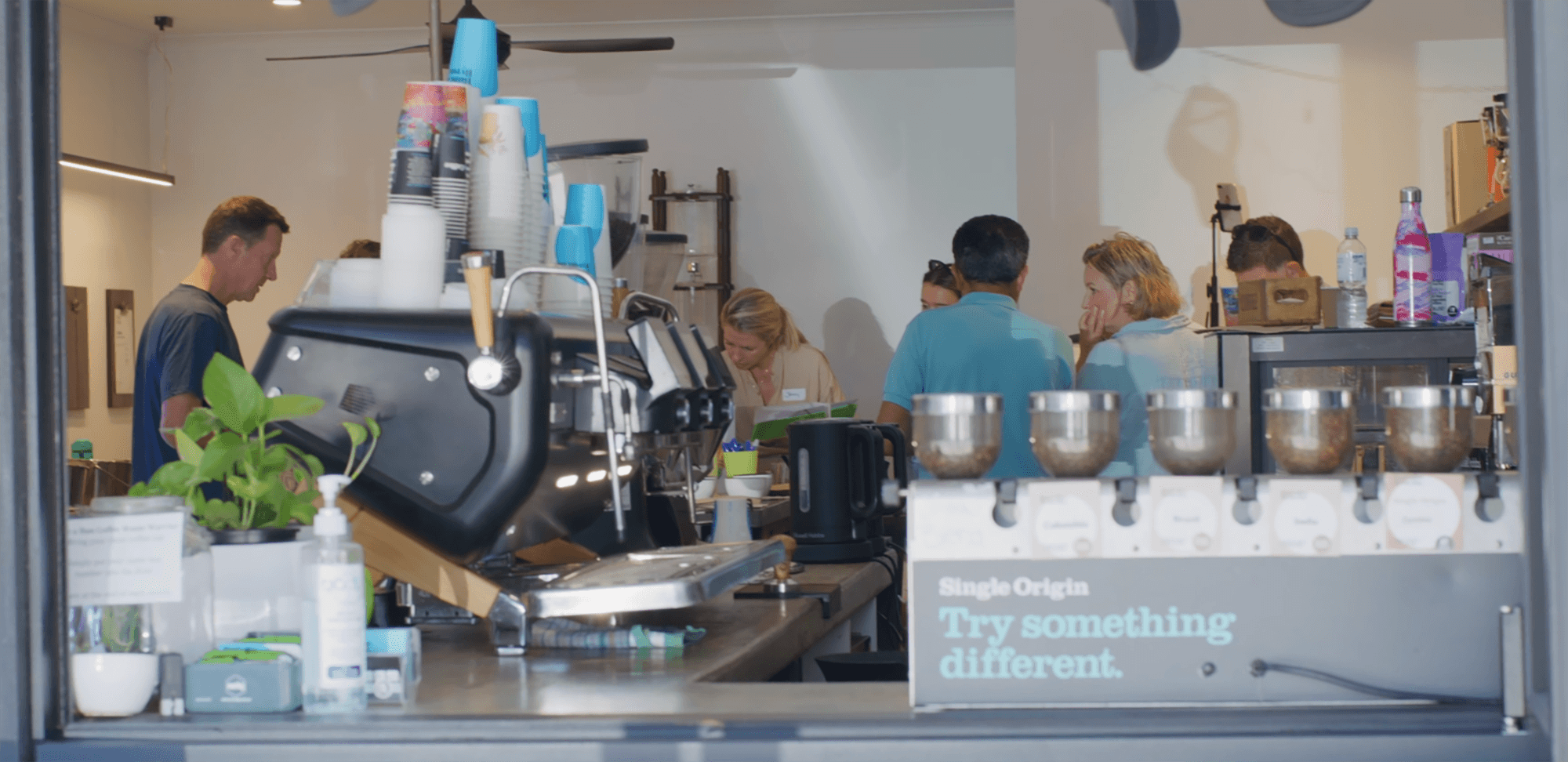A double shot for Australia’s emerging coffee-growing industry
Southern Cross University, in conjunction with AgriFutures Australia, has unveiled a world-first coffee character sensory wheel.

First published by Southern Cross University
Australians love their coffee. We consume more than six billion cups of coffee annually! But can you describe what it tastes like?
Southern Cross University, in conjunction with AgriFutures Australia, has unveiled a world-first coffee character sensory wheel. Published in the Journal of Sensory Studies, the research has also pinpointed the specific taste of Australian-grown coffee.
The Coffee Character Wheel is a colour-coded visual glossary of terms to describe coffee, organised by acidity, aftertaste and mouthfeel. It establishes a common language between coffee drinkers and producers.
The Coffee Character Wheel has a secondary purpose. It’s designed to help build demand for Australian-grown coffee beans. The coffee bean market in Australia is worth $1billion, yet the majority of beans are sourced internationally.
/prod01/channel_8/media/scu-dep/news/images/2023/Coffee-tasting-panel-04-low-res.png)
“The aim of the Coffee Character Wheel is to suggest and unify the vocabulary used for describing the acidity, mouthfeel, aftertaste, and overall characteristics of coffee that are not specifically flavour,” said Southern Cross University’s project researcher Dr Simon Williams.
And what does Australian-grown coffee taste like?
“Using the Coffee Character Wheel, Australian-grown coffee has been described as having a low-medium intensity acidity with citric acid and malic acid characters similar to apple and berry, a smooth texture and light medium body mouthfeel, a medium-long aftertaste and flavours described as fruity and nutty,” Dr Williams said.
“It is this sort of information that will allow us to inform consumers that Australia is a sophisticated and established coffee producer with enormous potential based on the unique characteristics of the region where that coffee is grown and produced.”
/prod01/channel_8/media/scu-dep/news/images/2023/Simon-Williams-w-Coffee-Wheel_2023-Dec-5_IMG_9173-low-res.JPG)
“The aim of the Coffee Character Wheel is to suggest and unify the vocabulary used for describing the acidity, mouthfeel, aftertaste, and overall characteristics of coffee that are not specifically flavour.”
Dr Simon Williams
Southern Cross University coffee project researcher
Terroir (translated as ‘taste of place’) refers to the environmental, varietal and agricultural factors that inform sensory experience. While the term is normally associated with wine and provides competitive advantages for high-quality wine producers, this research shows terroir equally applies to the coffee industry.
AgriFutures Australia and Southern Cross University produced the Defining terroir of Australian coffee to increase demand and investment report that summarises an investigation into coffee terroir, especially the terroir of Australian-grown coffee.
More than 100 Australian-grown single-origin green beans from 28 farms were analysed, along with an additional 50 international single-origin green beans. The green beans were roasted using a fixed roast profile to ensure equal treatment and then tasted by 15 coffee panels across Australia. The panellists included coffee growers, green bean buyers, importers, roasters, baristas, trainers and coffee judges. These coffees were also analysed chemically to provide a unique fingerprint.
/prod01/channel_8/media/scu-dep/news/images/2023/Coffee-Character-Wheel-Poster-JPG.jpg)
“The coffees were de-identified and given to 138 panellists to taste at our coffee-tasting panels. We confirmed that Australian-grown coffee is sweeter, nuttier and fruitier in flavour. This pleasant terroir is probably due to the cooler temperature in our coffee-producing areas,” said Dr Ben Liu of Southern Cross University, the project’s principal investigator.
The researchers collected thousands of coffee descriptions from the cupping panels as well as coffee literature. A total of 679 unique sensory terms identified for acidity, mouthfeel, and aftertaste were distilled into a total of 95 for acidity, mouthfeel, aftertaste, and an overall grouping for shared terms. The reduced terms were arranged onto a coffee character wheel organised from broad to specific. The created character wheel provides a concise list of terms for coffee cuppers to assess acidity, mouthfeel, and aftertaste.
The University’s Coffee Character Wheel is unique. It expands on the original Coffee Taster's Flavor Wheel by including previously missing elements: acidity, mouthfeel and aftertaste.
“For coffee aroma and flavour, we standardise to the well-known Coffee Taster's Flavor Wheel. However, we also identified many coffee descriptions for Australian-grown coffee beans related to coffee acidity, mouthfeel and aftertaste. These descriptions have not been widely discussed in the literature,” Dr Liu said.
“We believe coffee is more than flavour. The acidity, mouthfeel, and aftertaste are also essential characteristics of coffee. We summarised these descriptions and created the world-first Coffee Character Wheel.”
Learn more: read the Getting to know your morning coffee a whole lot more fact sheet.
/prod01/channel_8/media/scu-dep/news/images/2023/Ben_Liu_Coffee-plant-trial_17122022_DSC_5933-low-res.jpg)
“We confirmed that Australian-grown coffee is sweeter, nuttier and fruitier in flavour. This pleasant terroir is probably due to the cooler temperature in our coffee-producing areas.”
Dr Ben Liu
Southern Cross University principal investigator
The Australian coffee growing industry is long established. Today it consists of about 50 growers split between North Queensland, south-eastern Queensland and northern NSW, who have successfully created a distinct and high-quality product that services small domestic, tourist and specialist export markets.
“Producing clear flavour profiles, depending on where and how Australian coffee beans are grown, will assist coffee producers in defining and communicating the unique characteristics and flavours of their coffee,” said AgriFutures Australia, Senior Manager Emerging Industries, Dr Olivia Reynolds.
“Importantly, consumers can start to identify their preferences depending on where that coffee is produced, much in the same way as wine.
“We believe this is a really important step forward globally. But in particular for an emerging coffee industry in Australia that will reduce our reliance on imports and give consumers an opportunity to support home grown Aussie produce and its unique terroir, and what better way than through a locally produced flat white."




